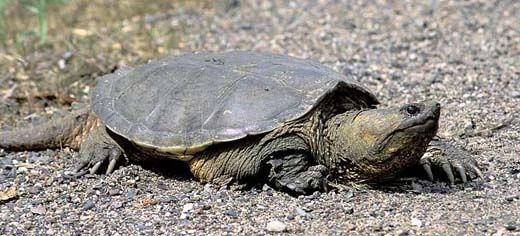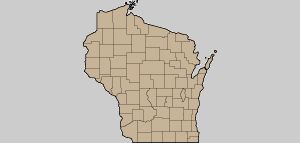Snapping Turtle
Chelydra serpentina
 Photo Credit: A.B. Sheldon
Photo Credit: A.B. SheldonFamily: Chelydridae (Snapping turtles)
Status: Common
Size: carapace 8 to 16 inches
The snapping turtle is Wisconsin's largest and heaviest turtle species. Its carapace can vary from light brown to black in color and it has a saw-toothed back edge. The tail supports a row of jagged dorsal scales and is nearly as long as the carapace. The head has large jaws and a pointed snout with a prominent beak. Its long neck, powerful jaws and aggressive behavior have rightly earned the snapping turtle its name.
 Found statewide in Wisconsin
Found statewide in WisconsinThe often yellowish-colored plastron is greatly reduced, leaving the limbs very exposed from the underside. Snapping turtles live in most aquatic habitats but prefer ponds, lakes and the backwaters of rivers. Both a predator and a scavenger, the snapper feeds on aquatic animals and plants. They consume almost any animal they can catch, although studies show that their reputation as a duckling predator has been greatly exaggerated. They also feed on slow-swimming, small fish or fresh dead fish. Snapping turtles are important top-line predators in aquatic food chains.
